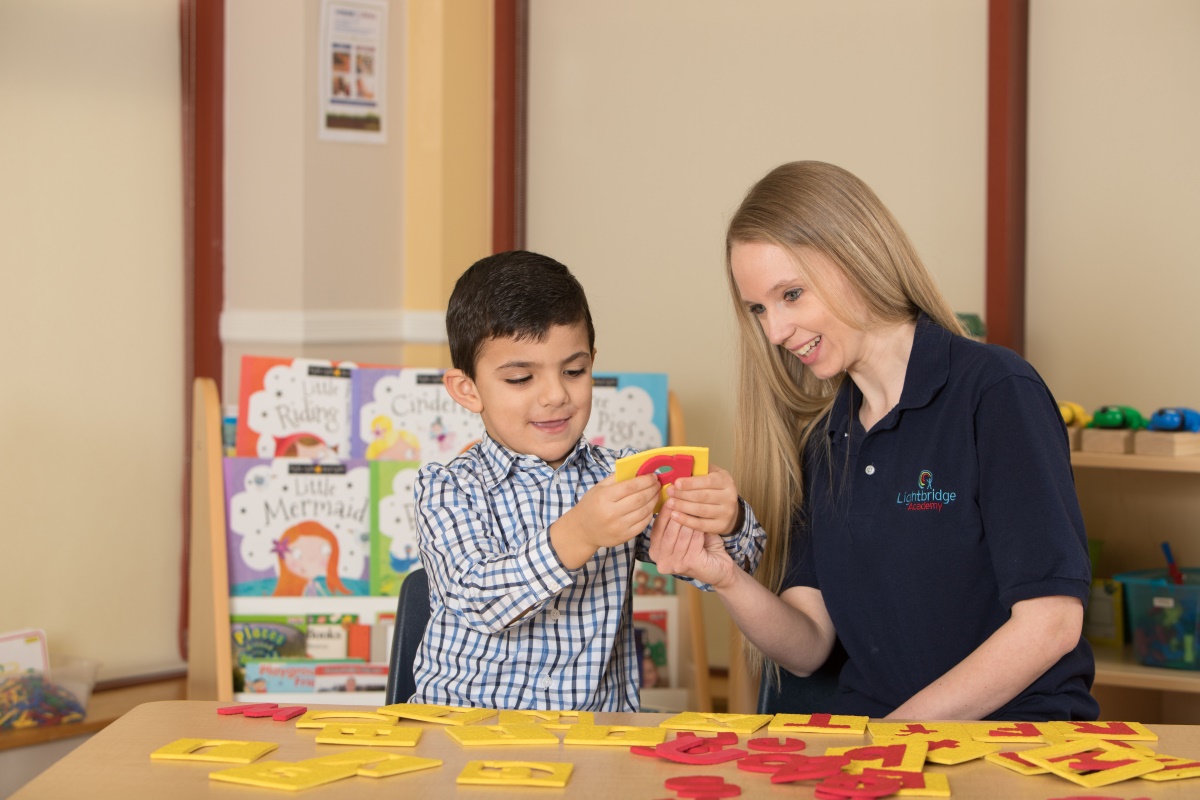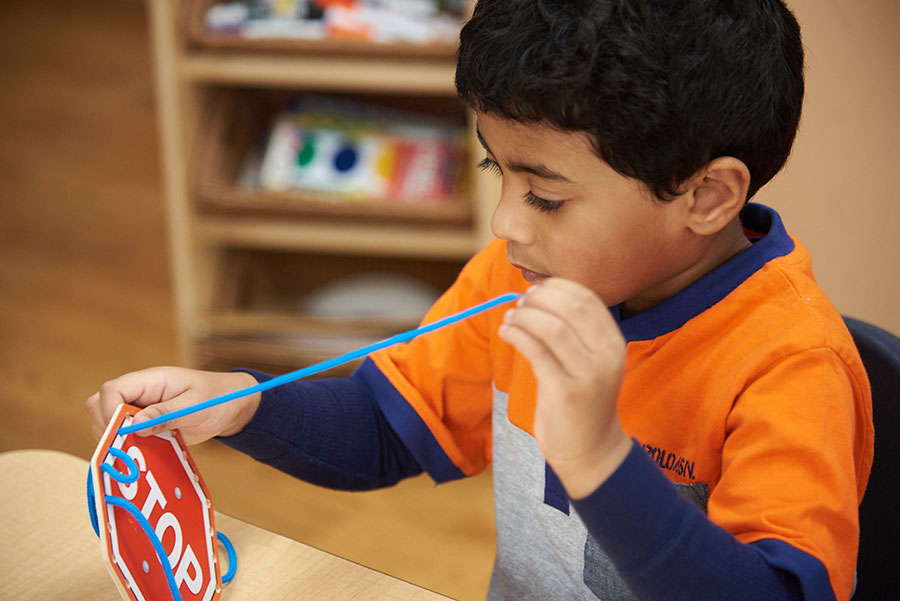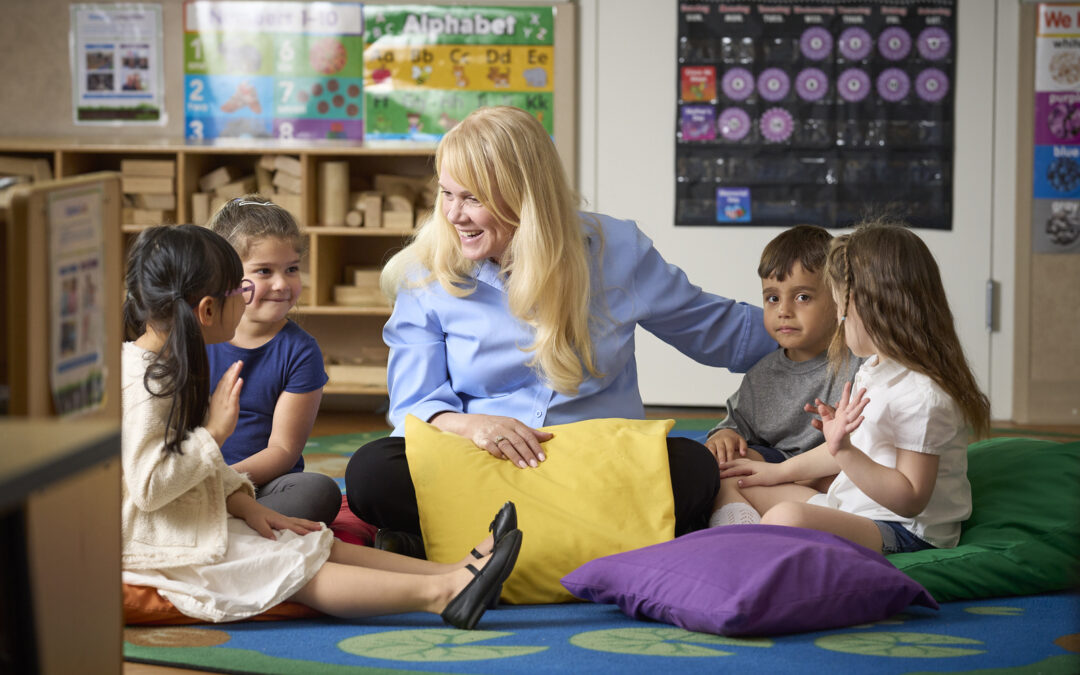Every new word is a step into a world of possibilities that can spark your little one’s imagination and curiosity when they learn to read. But how do we go about teaching them to read?
Learn what you should know about preschool reading and how to get your young learner ready.
How to Teach Your Preschooler to Read
It starts by creating a rich language environment that not only helps them learn but also makes it fun to fall in love with. A big part of reading is phonics – the sounds that letters and letter combinations make. Research shows that understanding phonics is essential in learning how to read. Teaching phonics to preschoolers helps them understand how letters are linked to sounds and how combining those letters and sounds makes words.
Start with daily story time. Not only do these precious moments act as a bonding time, but they also help your little one hear how words are pronounced. Choose picture books that pop with bright illustrations to catch their eye and interactive books that keep them engaged. Books that rhyme or repeat are perfect because your child can guess what’s coming next, which is a blast for them and great for learning, especially for their memory and phonetic skills.
When snuggled up with your little one and a good book, trace the words with your finger. It’s a simple trick that shows your child how we read from left to right and helps them connect spoken and written language.
What to Keep in Mind When Teaching Phonics to Preschoolers
When teaching phonics to preschoolers, think fun, playful, and stress-free. Weave learning into playtime with songs, nursery rhymes, matching, and alphabet games. Try out an alphabet scavenger hunt where your preschooler finds an item that starts with each letter.
Remember, every child is different and learns at their own pace. Some may grasp letter sounds quicker than others. Celebrate every little step to keep them excited about their progress. They’re learning a whole new skill, after all!
What Should I Read to My Preschooler?
Preschoolers love books that are bright and have rhythmic text. They’re drawn to stories that mirror their own experiences—such as fun trips, family adventures, or even just a day at the park. They also often like books about animals, fairy tales, or anything that allows them to explore their imagination.
Interactive books with flaps to lift or textures to touch allow your preschooler to keep those little hands busy and minds engaged while reading.
Lightbridge Academy’s Approach to Preschool Reading
At Lightbridge Academy, preschool reading is a core component of our Pre-K curriculum. We understand that preschool years are critical for language, literacy, and developing a love of reading. We weave reading and writing into daily learning throughout our Seedlings Early Childhood Education Curriculum and our classrooms are filled with labeled items and signs that help improve your child’s vocabulary and sight word recognition.
But it’s not just about reading. It’s about loving it. Through creative journaling and stories, we promote a love for literature. Our hands-on approach means your child isn’t just sitting and listening; they’re actively engaging, creating, and participating in their reading journey. We understand that developing strong reading skills early on sets the foundation for academic success and a lifelong enjoyment of reading.
Last year alone, 97% of our Pre-K students tested proficient in kindergarten-readiness skills through the Vine Assessment. At Lightbridge Academy, we believe the best child care is one where your little one thrives not just in play but in education, too. We’re igniting a passion for learning and reading they can take with them throughout their educational journey.
Let’s go on this adventure together. Schedule a tour at your local Lightbridge Academy today.






